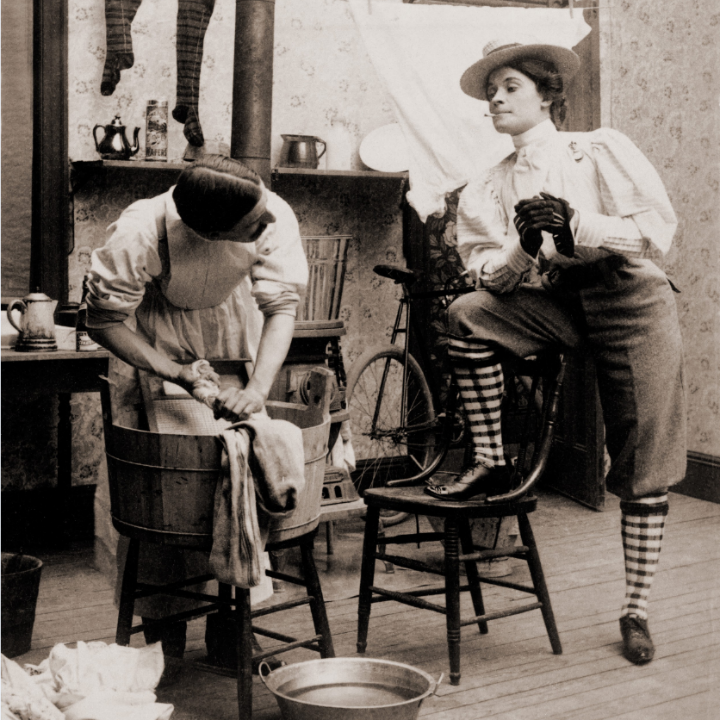
Women at Home
Thinking about women at home in this period calls to mind the iconic image of the ‘angel in the house’. Taken from Coventry Patmore’s poem of this name (1854-1862), the phrase denotes the expected role of the Victorian woman as a devoted wife and mother. Dutiful and obedient, she was a spiritual and moral guide to her husband and children. Her position at the hearth came to stand for the role of women in the nation and the empire at large. Though modern critics have questioned how pervasive this concept really was in Victorian Britain, domestic ideology did play an important role in middle-class culture. Conduct literature advised women and girls how to become good wives and mothers and domestic paintings, novels and magazines depicted the ideal wife and mother as the paragon of virtue.
Marriage remained a preoccupation of the Victorian novel; but by the end of the century, New Woman writers were subverting the traditional marriage plot to narrate the confinement of women in the home and their subjection to domestic cruelty. Many of these writers were themselves active in the women’s movement and used fiction as a political tool to advocate for marriage reform. This section includes an anthology of documents on the Late-Victorian Marriage Question edited by Ann Heilmann together with a number of critical works on women, marriage and the state and on the representation of marriage and gender roles in New Woman fiction. Other works in the section extend these considerations to a wider European, American and imperial context.